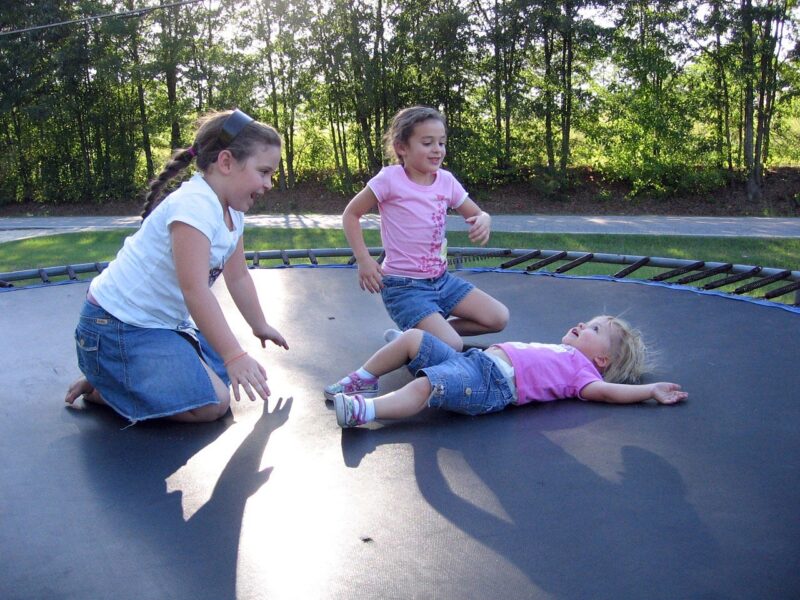The Invention of the Trampoline and How It Became a Backyard Favorite
November 15, 2024

The trampoline has become a staple of backyard fun for children and adults alike. But how did this beloved leisure activity come to be a popular part of outdoor entertainment? Let’s jump into the fascinating history of the trampoline, exploring its origins, evolution, and the reasons behind its enduring popularity.
1. The Early Beginnings of the Trampoline
The story of the trampoline begins in the 1930s, when an innovative acrobat named George Nissen developed the concept during his time as a student at the University of Iowa. Inspired by the safety nets used by trapeze artists, Nissen envisioned a device that would allow gymnasts and acrobats to perform jumps and tricks safely without the risk of injury. He teamed up with his coach, Larry Griswold, to create the first prototype of this elastic jumping device.
The original design consisted of a rectangular frame made of steel, covered with heavy-duty canvas, and equipped with coiled springs for a bounce effect. Nissen and Griswold called it the “trampolene,” a term derived from the Spanish word “trampolín,” meaning “diving board.” The first trampoline was constructed in 1936, and soon after, Nissen showcased its potential at exhibitions.
2. Trampolining: Not Just for Fun
Initially, trampolines were primarily used in gymnastics and circus performances. They became an essential training tool for athletes looking to improve their aerial skills, balance, and coordination. In 1948, Nissen founded the first commercial trampoline company, and as demand grew, the trampoline began to infiltrate more recreational spaces.
By the 1950s, the sport of trampolining gained official recognition, with the formation of national and international governing bodies such as the United States Trampoline and Tumbling Association (USTA) and the International Trampoline Federation (FIT). This formal recognition further fueled interest, leading to competitions and exhibitions that showcased the agility and creativity of trampolining.
3. The Rise in Popularity of Backyard Trampolines
As trampolining became more popular among athletes and performers, it also started to make its way into backyards. By the 1960s and 1970s, affordable and safe trampoline models were being sold to the general public. Families saw them as a way to provide children with hours of outdoor entertainment and exercise.
One of the driving forces behind the rise in popularity of backyard trampolines was the recognition of their physical and social benefits. Jumping on a trampoline improves balance, coordination, and cardiovascular fitness. It can be a fun way for families to bond while staying active together.
Safety measures also evolved alongside the trampoline’s popularity, with manufacturers introducing safety nets and padding to reduce the risk of injury during use. These safety features made trampolines an even more appealing addition to family backyards.
4. The Cultural Impact of Trampolining
Trampolines have not only influenced physical activity, but they have also had a significant impact on popular culture. Movies, television shows, and commercials began featuring trampolines as symbols of fun and freedom. The sport garnered further attention when it was included in the 2000 Sydney Olympics, solidifying its place as a legitimate athletic pursuit.
In recent years, trampoline parks have sprung up across the globe, offering a safe and exhilarating environment for people of all ages to enjoy. These parks emphasize the social aspects of trampolining, allowing friends and families to gather for interactive fitness sessions and athletic competitions.
5. Trampolining Today: The Modern Era
Today, trampolines continue to evolve, with technology improving both the design and experience. New materials allow for better bounce and durability, while innovative designs cater to various styles of play. The rise of social media has also popularized the sport as users share their impressive tricks and challenges online, inspiring others to join in.
Moreover, the trampoline has diversified beyond simple recreational use. It is now employed in fitness classes, rehabilitation programs, and even professional athletic training. As cardiovascular workouts become increasingly important, trampolining provides a fun and effective way to stay in shape while enjoying the outdoors.
6. Safety Tips for Backyard Trampoline Use
While trampolines can be a source of joy, it’s essential to prioritize safety for users of all ages. Here are some tips for safe trampoline use:
- Supervision: Always supervise children while they use the trampoline, ensuring they are following safety guidelines.
- Limit Use to One Person at a Time: This avoids collisions and injuries.
- Use Safety Gear: Ensure that the trampoline has safety nets and padding around the edges.
- Proper Landing Techniques: Teach users to jump and land safely to avoid injury.
- Regular Maintenance: Inspect the trampoline regularly for wear and tear before use.
Incorporating these precautions can help ensure that jumping on a trampoline remains a safe, enjoyable experience for everyone.
Conclusion
The trampoline has traveled a remarkable journey from a gymnastic training tool to a cherished backyard fixture. With its rich history and dynamic modern-day applications, trampolining continues to bring joy, fitness, and adventure to millions. Whether you’re bouncing to stay active or simply having fun, the trampoline remains a beloved piece of childhood and family life.
Explore the vibrant history and culture surrounding the trampoline and discover why this simple invention has become such a staple of outdoor fun across the globe.






